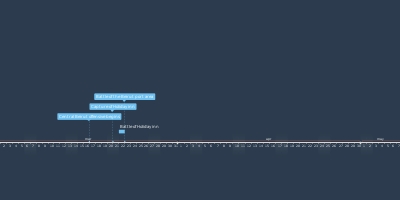KRF - NLP clashes (14 h 13 abr 1975 ano – 15 abr 1975 ano)
Descrição:
In the commotion that followed, armed Phalangist KRF and NLP Tigers militiamen took the streets, and began to set up roadblocks at Ain el-Rammaneh and other Christian-populated eastern districts of the Lebanese Capital, stopping vehicles and checked identities,[8] while in the mainly Muslim western sectors the Palestinian factions did likewise.Believing that the perpetrators were Palestinian guerrillas who carried the attack in retaliation for the earlier driver incident, and outraged by the audacity of the attempt on the life of their historical leader, the Phalangists planned an immediate response. Shortly after mid-day, a PLO bus carrying unsuspecting Palestinian Arab Liberation Front (ALF) militants and Lebanese sympathizers (including women and children) returning from a political rally at Tel el-Zaatar held by the Popular Front for the Liberation of Palestine – General Command (PFLP-GC)[9] passed through Ain el-Rammaneh on its way to Sabra refugee camp. As the bus drove through the narrow street-alleys, it fell into an ambush outside the same Church perpetrated by a squad of Phalange KRF militiamen led by Bashir Gemayel, Pierre Gemayel's younger son. The Phalangists promptly fired upon the vehicle, killing 27 and wounding 19 of its passagers, including the driver.[10] According to sociologist Samir Khalaf all 28 passengers were killed,[11] although other sources stated that 22 PLO members were shot dead by the Phalangists.
This bloody incident, which became known as the "Bus massacre", incited long-standing sectarian hatred and mistrust, and sparked heavy fighting throughout the country between Kataeb Regulatory Forces militiamen and the Palestinian Fedaiyyin and their leftist-Muslim allies of the Lebanese National Movement (LNM) alliance, resulting in over 300 dead in just three days.[13]
The recently appointed Lebanese prime-minister, the Sunni Muslim Rashid al-Sulh, tried vainly to defuse the situation as quickly as possible by sending in the evening of the day following the massacre a Gendarmerie detachment from the Lebanese Internal Security Forces (ISF) to Ain el-Rammaneh, which detained a number of suspects. In addition, Prime-Minister Sulh tried to pressure Phalangist Party' President Pierre Gemayel to hand over to the authorities the Phalangist KRF militiamen responsible for the death of the Palestinian driver. Gemayel publicly refused however, hinting that he and his Party would no longer abide by the authority of the government.[14] He later sent a Phalangist delegation on a mission to secure the release of the previously detained suspects held in custody by the Lebanese authorities, stating that the individuals involved in the incident were just defending themselves and that no charges could be pressed against them.
As news of the murders spread, armed clashes between PLO guerrilla factions and other Christian militias erupted throughout the Lebanese Capital. Soon Lebanese National Movement (LNM) militias entered the fray alongside the Palestinians. Numerous ceasefires and political talks held through international mediation proved fruitless. Sporadic violence escalated into a full-fledged civil war over the next two years, known as the 1975–76 phase of the Lebanese Civil War, in which 80,000 people lost their lives and split Lebanon along factional and sectarian lines for another 16 years.
Adicionado na linha do tempo:
Data:
14 h 13 abr 1975 ano
15 abr 1975 ano
~ 2 days
